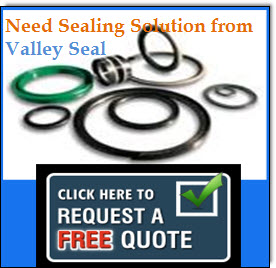Hydraulic seals are used in varied industry applications to achieve optimum equipment performance, reduced leakage, low friction operation, and an extensive service life. However, if a seal is not designed for a specific application, it can result in seal failure. This will lead to equipment problems and costly downtime. Such issues can be prevented if we have an understanding about the causes of seal failure.
Causes of Seal Failures
Some of the most common reasons that lead to hydraulic seal failure include:
- Hardening :Seals can harden due to high speed heat generation and high fluid temperature in applications. Hardening of the seals results in cracks and loss of elasticity, this can lead to seal failure.
- Wear :Wear on the dynamic face – one side of dynamic lip or the complete dynamic lip – can considerable seal damage. Some of the most common reasons of wear include insufficient lubrication and excessive lateral load.
- Scarring :Cuts or dents on the seal’s dynamic lip, and scratches on the dynamic side affects hydraulic seal efficiency. This damage is caused due to the use of improper installation tools, and the presence of foreign materials in the fluid.
- Fracturing :This condition results in burning and breaking of seals, long cracks on the V portion, and also breaking off of the whole dynamic side of the seal. Some of the reasons for seal fracturing are excessive back pressure, high pressure shocks or spikes, or use of low-grade materials in the seal manufacturing process.
Proper Installation
Besides these points discussed, there are other causes that lead to hydraulic seal failure. Erroneous seal purchase and installation is one of the most significant reasons for seal failure. Since quality hydraulic seals are available in various specifications, it is crucial to use the right one for applications that it is intended for. Also, utmost care must be given while installing these seals; an upside-down installation makes the seal inefficient. Proper installation demands an in-depth knowledge about the seal types and the intended application area.






